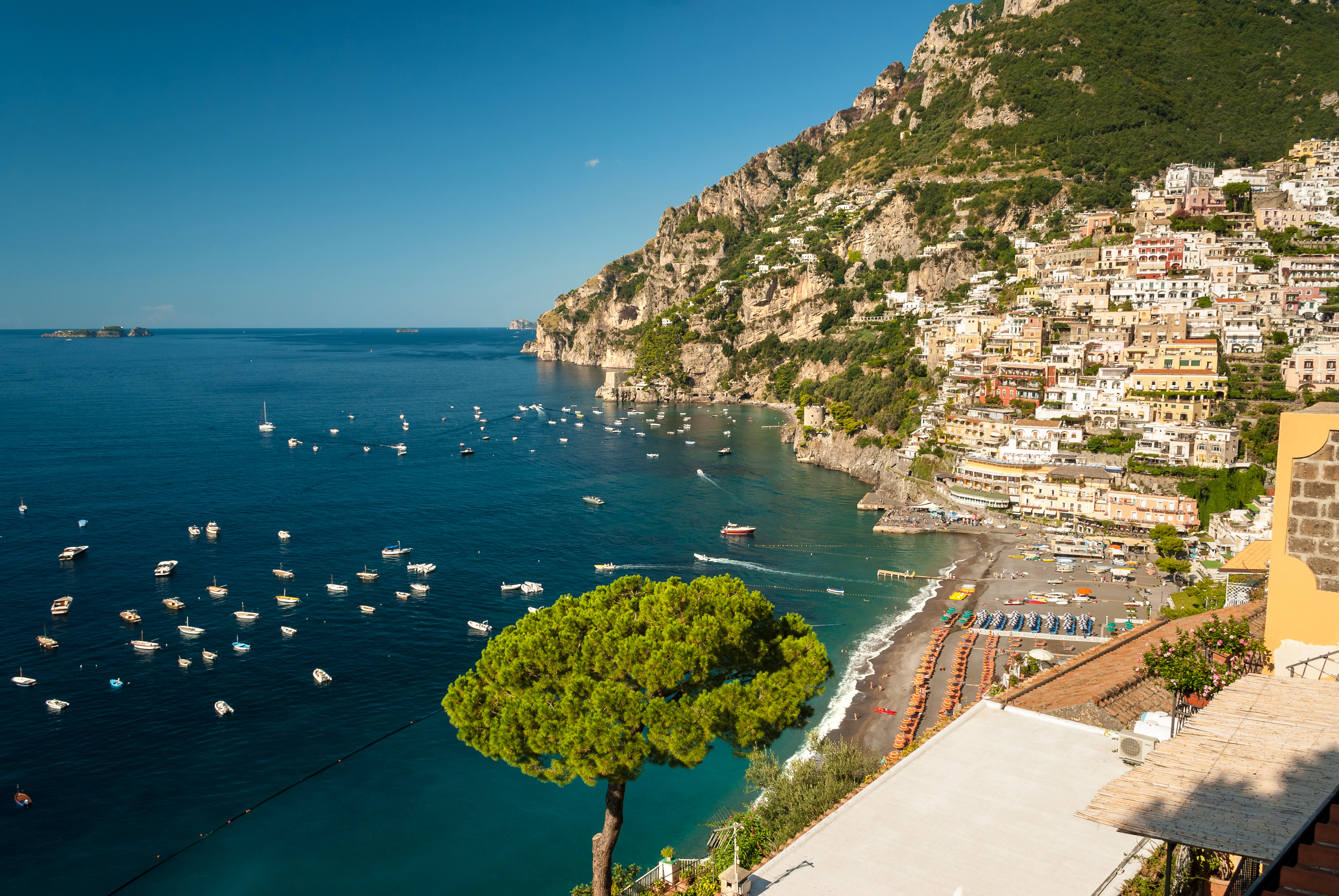|
Tyrrhenian Sea
The Tyrrhenian Sea (, ; or ) , , , , is part of the Mediterranean Sea off the western coast of Italy. It is named for the Tyrrhenians, Tyrrhenian people identified with the Etruscans of Italy. Geography The sea is bounded by the islands of Corsica and Sardinia (to the west), the Italian Peninsula (regions of Tuscany, Lazio, Campania, Basilicata, and Calabria) to the north and east, and the island of Sicily (to the south). The Tyrrhenian Sea also includes a number of smaller islands like Capri, Elba, Ischia, and Ustica. The maximum depth of the sea is . The Tyrrhenian Sea is situated near where the African Plate, African and Eurasian Plates meet; therefore mountain chains and active volcanoes, such as Mount Marsili, are found in its depths. The eight Aeolian Islands and Ustica are located in the southern part of the sea, north of Sicily. Extent The International Hydrographic Organization defines the limits of the Tyrrhenian Sea as follows: * In the Strait of Messina: A line ... [...More Info...] [...Related Items...] OR: [Wikipedia] [Google] [Baidu] |
Tyrrhenians
Tyrrhenians (Attic Greek: ''Turrhēnoi'') or Tyrsenians ( Ionic: ''Tursēnoi''; Doric: ''Tursānoi'') was the name used by the ancient Greeks authors to refer, in a generic sense, to non-Greek people, in particular pirates. While ancient sources have been interpreted in a variety of ways, the Greeks always called the Etruscans Tyrsenoi, although not all Tyrsenians were Etruscans. Furthermore the languages of Etruscan, Rhaetian and Lemnian cultures have been grouped together as the Tyrsenian languages, based on their strong similarities. Earliest references The names are believed to be exonyms, only known to have been used by authors of Ancient Greek, though their origin is uncertain and apparently not Greek. They have been connected to τύρσις (''túrsis''), also a "Mediterranean" loan into Greek, meaning " tower". Direct connections with '' Tuscī'', the Latin exonym for the Etruscans, from *''Turs-ci'', have also been attempted. The French linguist Françoise ... [...More Info...] [...Related Items...] OR: [Wikipedia] [Google] [Baidu] |
Elba
Elba (, ; ) is a Mediterranean Sea, Mediterranean island in Tuscany, Italy, from the coastal town of Piombino on the Italian mainland, and the largest island of the Tuscan Archipelago. It is also part of the Arcipelago Toscano National Park, and the third largest List of islands of Italy, island in Italy, after Sicily and Sardinia. It is located in the Tyrrhenian Sea about east of the French island of Corsica. The island is part of the province of Livorno and is divided into seven municipalities, with a total population of about 30,000 inhabitants which increases considerably during the summer. The municipalities are Portoferraio (which is also the island's principal town), Campo nell'Elba, Capoliveri, Marciana, Marciana Marina, Porto Azzurro, and Rio, Italy, Rio. It is famous for being the site of Napoleon's first exile, from 1814 to 1815. Geography Elba is the largest remaining stretch of land from the ancient tract that once connected the Italian peninsula to Corsica. The ... [...More Info...] [...Related Items...] OR: [Wikipedia] [Google] [Baidu] |
Tinetto
Tinetto is an Italian island situated in the Gulf of La Spezia, in the eastern part of the Ligurian Sea. It is part of an archipelago of three closely spaced islands jutting out south from the mainland at Portovenere. In 1997, the archipelago, together with Portovenere and the Cinque Terre, was designated by UNESCO as a World Heritage Site. Wildlife A subspecies of the common wall lizard, ''Podarcis muralis tinettoi'', is endemic to the island. See also * List of islands of Italy This is a list of islands of Italy. There are nearly 450 islands in Italy, including islands in the Mediterranean Sea (including the marginal seas: Adriatic Sea, Ionian Sea, Libyan Sea, Ligurian Sea, Sea of Sardinia, Tyrrhenian Sea, and inland is ... Islands of Liguria Italian Riviera Ligurian Sea Province of La Spezia World Heritage Sites in Italy {{Liguria-geo-stub ... [...More Info...] [...Related Items...] OR: [Wikipedia] [Google] [Baidu] |
Cap Corse
Cap Corse (; , ; , ), a geographical area of Corsica, is a long peninsula located at the northern tip of the island. At the base of it is the second largest city in Corsica, Bastia. Cap Corse is also a Communauté de communes comprising 18 communes.CC du Cap Corse (N° SIREN : 200042943) BANATIC, accessed 4 November 2024. The area of the ''Communauté de communes'' is 305.7 km2, and its population was 6,706 in 2019.Comparateur de territoire [...More Info...] [...Related Items...] OR: [Wikipedia] [Google] [Baidu] |
Strait Of Bonifacio
The Strait of Bonifacio (; ; ; ; ; ; ) is the strait between Corsica and Sardinia, named after the Corsican town Bonifacio. It is wide and divides the Tyrrhenian Sea from the western Mediterranean Sea. The strait is notorious among sailors for its weather, currents, shoals, and other obstacles. The strait, while relatively narrow, has no fixed link and relies on ferry services. The most famous disaster in the Strait of Bonifacio was that of the French frigate '' Sémillante'' on February 15, 1855. ''Sémillante'' had left the port of Toulon the day before on her way into the Black Sea to supply the Crimean War The Crimean War was fought between the Russian Empire and an alliance of the Ottoman Empire, the Second French Empire, the United Kingdom of Great Britain and Ireland, and the Kingdom of Sardinia (1720–1861), Kingdom of Sardinia-Piedmont fro ... with troops. A storm caused her to hit a reef; the ship sank and none of the 750 soldiers on board survived. After a ta ... [...More Info...] [...Related Items...] OR: [Wikipedia] [Google] [Baidu] |
Strait Of Messina
The Strait of Messina (; ) is a narrow strait between the eastern tip of Sicily (Punta del Faro) and the western tip of Calabria (Punta Pezzo) in Southern Italy. It connects the Tyrrhenian Sea to the north with the Ionian Sea to the south, within the central Mediterranean Sea, Mediterranean. At its narrowest point, between Torre Faro and Villa San Giovanni, it is wide. At the city of Messina, Italy, Messina, it is wide. The strait's maximum depth is about . The strait has strong tidal currents that create a Marine Life of the Straits of Messina, unique marine ecosystem. The rock in the town of Scilla, Calabria at the north of the strait and a natural whirlpool in the northern portion of the strait have been linked to the Greek legend of Scylla and Charybdis. In some circumstances, the mirage of Fata Morgana (mirage), Fata Morgana can be observed when looking at Sicily from Calabria. With its bottleneck shape, it is also a compulsory point of transit in the Migration (birds), m ... [...More Info...] [...Related Items...] OR: [Wikipedia] [Google] [Baidu] |
International Hydrographic Organization
The International Hydrographic Organization (IHO) (French: ''Organisation Hydrographique Internationale'') is an intergovernmental organization representing hydrography. the IHO comprised 102 member states. A principal aim of the IHO is to ensure that the world's seas, oceans and navigable waters are properly surveyed and charted. It does this through the setting of international standards and through its capacity building programs and offices. The IHO enjoys observer status at the United Nations, where it is the recognized competent authority on hydrographic surveying and nautical charting. When referring to hydrography and nautical charting in conventions and similar instruments, it is the IHO standards and specifications that are normally used. History During the 19th century, many maritime nations established hydrographic offices to provide means for improving the navigation of naval and merchant vessels by providing nautical publications, nautical charts, and oth ... [...More Info...] [...Related Items...] OR: [Wikipedia] [Google] [Baidu] |
Aeolian Islands
The Aeolian Islands ( ; ; ), sometimes referred to as the Lipari Islands or Lipari group ( , ) after their largest island, are a volcanic archipelago in the Tyrrhenian Sea north of Sicily, said to be named after Aeolus, the mythical ruler of the winds. The islands' inhabitants are known as Aeolians (). The islands had a permanent population of 14,224 at the 2011 census; the latest official estimate is 15,419 as of 1 January 2019. The Aeolian Islands are a popular tourist destination in the summer and attract up to 600,000 visitors annually. There are seven significant islands: Lipari, Vulcano, Salina, Stromboli, Filicudi, Alicudi and Panarea, and a set of minor islands and rocks. Geography The Aeolian Islands are off the north coast of Sicily in the Tyrrhenian Sea. Vulcano is located closest to the Sicilian coast. Lipari and Salina follow to the north, Filicudi and Alicudi to the west, and Panarea and Stromboli to the northeast. In addition to these seven inhabited is ... [...More Info...] [...Related Items...] OR: [Wikipedia] [Google] [Baidu] |
Marsili
Marsili is a large undersea volcano in the Tyrrhenian Sea, about south of Naples. The seamount is about 3,000 m (9,800 feet) tall; its peak and crater are about 450 m below the sea surface. Though it has not erupted in recorded history, volcanologists believe that Marsili is a relatively fragile-walled structure, made of low-density and unstable rocks, fed by the underlying shallow magma chamber. Volcanologists with the Italian National Institute of Geophysics and Volcanology (INGV) announced on March 29, 2010, that Marsili could erupt at any time, and might experience a catastrophic collapse that would suddenly release vast amounts of magma in an undersea eruption and landslide that could trigger destructive tsunamis on the Italian coast and nearby Mediterranean coastlines. Geomorphology Marsili belongs to the Aeolian Islands volcanic arc. It is one of the largest volcanoes in Europe, with a length of and a width of , larger than Mount Etna. It was discovered during the 192 ... [...More Info...] [...Related Items...] OR: [Wikipedia] [Google] [Baidu] |
Golfo Di Orosei
''Golfo'' () is a 1915 Greek silent film directed by Konstadinos Bahatoris. It is the first Greek feature film and fustanella film. The fustanella is a pleated skirt-like garment that is also referred to as a kilt. The traditional Greek garment is still worn by the Presidential Guard of Greece. Another fustanella film is '' Astero (1929)''. ''Golfo'' was based on a popular Greek agricultural-themed play written by Spyridon Peresiadis. Golfo is a tragedy resembling William Shakespeare's ''Romeo and Juliet''. It was the forerunner for agricultural-themed films in Greek cinema during the 1920s and 1930s inspiring films featuring sheep herders such as '' Astero (1929)'' and ''Daphnis and Chloe''. The first synchronized sound film (talkie) in Greece was another fustanella shepherd romance inspired by ''Golfo'' released in 1932 entitled ''Sweetheart of a Shepherdess (Ο Αγαπητικός της βοσκοπούλας)''. The original five-act play entitled ''Golfo'' fir ... [...More Info...] [...Related Items...] OR: [Wikipedia] [Google] [Baidu] |





